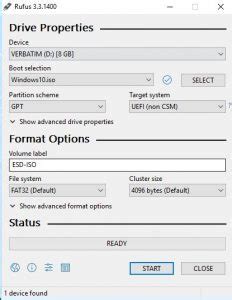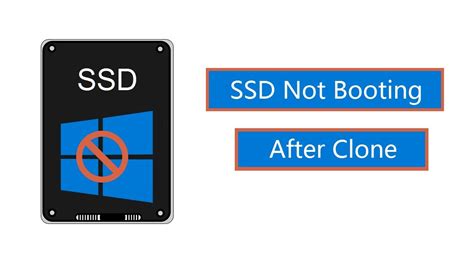clone drive wont boot | make ssd bootable after cloning clone drive wont boot Open Gparted. Navigate to the drive containing the clone source, format the new partition where the clone will be placed if you didn't already and take note of the name of the partitions containing the clone source and target. Open a Terminal. Type the following command to clone the Windows 10 to the new partition: With Louis Vuitton’s crossbody bags for women, enjoy modern, hands-free carry as well as the Maison’s inimitable style. Discover the collection from soft or structured shapes, classic or on-trend designs, many with removable or adjustable straps: Pochette Métis, Dauphine, Twist, Petite Malle, Coussin, Alma and many more.
0 · windows 10 won't boot after clone
1 · ssd not booting after cloning
2 · make ssd bootable after cloning
3 · make drive bootable after clone
4 · make disk bootable after clone
5 · make a cloned disk bootable
6 · inaccessible boot device after cloning
7 · after cloning disk won't boot
855.537.4233 [email protected] 888.273.7876 (Option 2) [email protected] ANZ 888.273.7876 (Option 2) [email protected] Online Help Community Forum Our Shade Support team is committed to providing you with an exceptional experience because nothing is more .
A few clones or installs won't wear your SSD to any significant degree. I would do a clean installation with only the SSD attached, as the HDD has issues (bad situation to clone). Then attach.
Install onto an SSD using a bootable Windows 10 32-bit (1903) USB installer. Reboot w/target drive to make sure it works. Power down. Clone previously configured Win10 installation from old HDD to SSD in external USB docks using . Run the bcdboot command in one of the following ways: a) If your system has only one drive/disk, run: bcdboot c:\windows. b) Otherwise, figure out the drive letter where Windows is installed on. The bootrec /scanos command should help with that. For example, if Windows is detected on "D:\Windows", then run: Open Gparted. Navigate to the drive containing the clone source, format the new partition where the clone will be placed if you didn't already and take note of the name of the partitions containing the clone source and target. Open a Terminal. Type the following command to clone the Windows 10 to the new partition: Select 'Clone this disk' and walk through the steps to put the same partitions onto the SSD. Wait an hour. Turn off. Pull power on old drive. Turn on. In bios, ensure boot order is set to the new SSD first. F10 SAVE, reboot. Wait a bit at the flashing cursor where it normally loads the OS. This old gem.
0. I cloned my 250GB m.2 to a new 2TB nvme m.2, and the cloning went fine, except in Disk Management it says: Healthy (Basic Data Partition) unlike my old SSD, which still says Healthy (Boot, Page File, Crash Dump, Basic Data Partition) When I go into the UEFI firmware and select the boot order to boot from, Windows' boot manager [NVME 2TB . The "Windows Boot Manager" option text comes from the UEFI boot variable, which is stored in the BIOS settings NVRAM, and not on the disk at all. So cloning the disk cannot clone it. Fortunately, Windows installs a second copy of its UEFI boot manager in the standard removable media/fallback path on the EFI System Partition: \EFI\boot\bootx64.efi.

windows 10 won't boot after clone
One way to "fix" this is to boot Windows from your old SSD again and run the command: sc.exe config stornvme start= boot. This will activate the Windows' built-in NVMe driver during the early boot phase. Once that's done, re-clone the system to the new SSD. Boot from windows DVD, enter the installation. When on the screen where you need to choose language for windows press shift + F10. You will now get a command prompt. When in the prompt type. bootrec.exe /fixmbr. bootrec.exe /fixboot. This should set your SSD as the active boot device by fixing the MBR. Apparently this enabled the NVME driver to run at boot time from then on. To do this - When the boot fails and goes to the recover screen select: Troubleshoot->AdvancedOptions->AdvancedStartupOptions->StartupSettings, then select Restart. When the computer restarts enter the number (4) for EnableSafeMode.
Old Windows called itself "C Drive", and that's where all system files were. It also called New HDD "F Drive". Well, that naming also got cloned into Clone Windows making Clone Windows' drive "F Drive" and Old Windows' drive "C Drive". In my head, Clone not finding any files in "C Drive" (because again, it had been erased) was the main issue. Install onto an SSD using a bootable Windows 10 32-bit (1903) USB installer. Reboot w/target drive to make sure it works. Power down. Clone previously configured Win10 installation from old HDD to SSD in external USB docks using . Run the bcdboot command in one of the following ways: a) If your system has only one drive/disk, run: bcdboot c:\windows. b) Otherwise, figure out the drive letter where Windows is installed on. The bootrec /scanos command should help with that. For example, if Windows is detected on "D:\Windows", then run: Open Gparted. Navigate to the drive containing the clone source, format the new partition where the clone will be placed if you didn't already and take note of the name of the partitions containing the clone source and target. Open a Terminal. Type the following command to clone the Windows 10 to the new partition:
Select 'Clone this disk' and walk through the steps to put the same partitions onto the SSD. Wait an hour. Turn off. Pull power on old drive. Turn on. In bios, ensure boot order is set to the new SSD first. F10 SAVE, reboot. Wait a bit at the flashing cursor where it normally loads the OS. This old gem.
0. I cloned my 250GB m.2 to a new 2TB nvme m.2, and the cloning went fine, except in Disk Management it says: Healthy (Basic Data Partition) unlike my old SSD, which still says Healthy (Boot, Page File, Crash Dump, Basic Data Partition) When I go into the UEFI firmware and select the boot order to boot from, Windows' boot manager [NVME 2TB . The "Windows Boot Manager" option text comes from the UEFI boot variable, which is stored in the BIOS settings NVRAM, and not on the disk at all. So cloning the disk cannot clone it. Fortunately, Windows installs a second copy of its UEFI boot manager in the standard removable media/fallback path on the EFI System Partition: \EFI\boot\bootx64.efi. One way to "fix" this is to boot Windows from your old SSD again and run the command: sc.exe config stornvme start= boot. This will activate the Windows' built-in NVMe driver during the early boot phase. Once that's done, re-clone the system to the new SSD. Boot from windows DVD, enter the installation. When on the screen where you need to choose language for windows press shift + F10. You will now get a command prompt. When in the prompt type. bootrec.exe /fixmbr. bootrec.exe /fixboot. This should set your SSD as the active boot device by fixing the MBR.
Apparently this enabled the NVME driver to run at boot time from then on. To do this - When the boot fails and goes to the recover screen select: Troubleshoot->AdvancedOptions->AdvancedStartupOptions->StartupSettings, then select Restart. When the computer restarts enter the number (4) for EnableSafeMode.

ssd not booting after cloning
The 11 Louis Vuitton Crossbody Bags We’re Eyeing Right Now. There's so much more to LV than the classic Speedy. Photo Courtesy of Kirstin Sinclair / Getty Image. BY Brianna Lapolla. Last Updated. Nov 20, 2023. There is nothing quite as timeless as a Louis Vuitton handbag.
clone drive wont boot|make ssd bootable after cloning

























